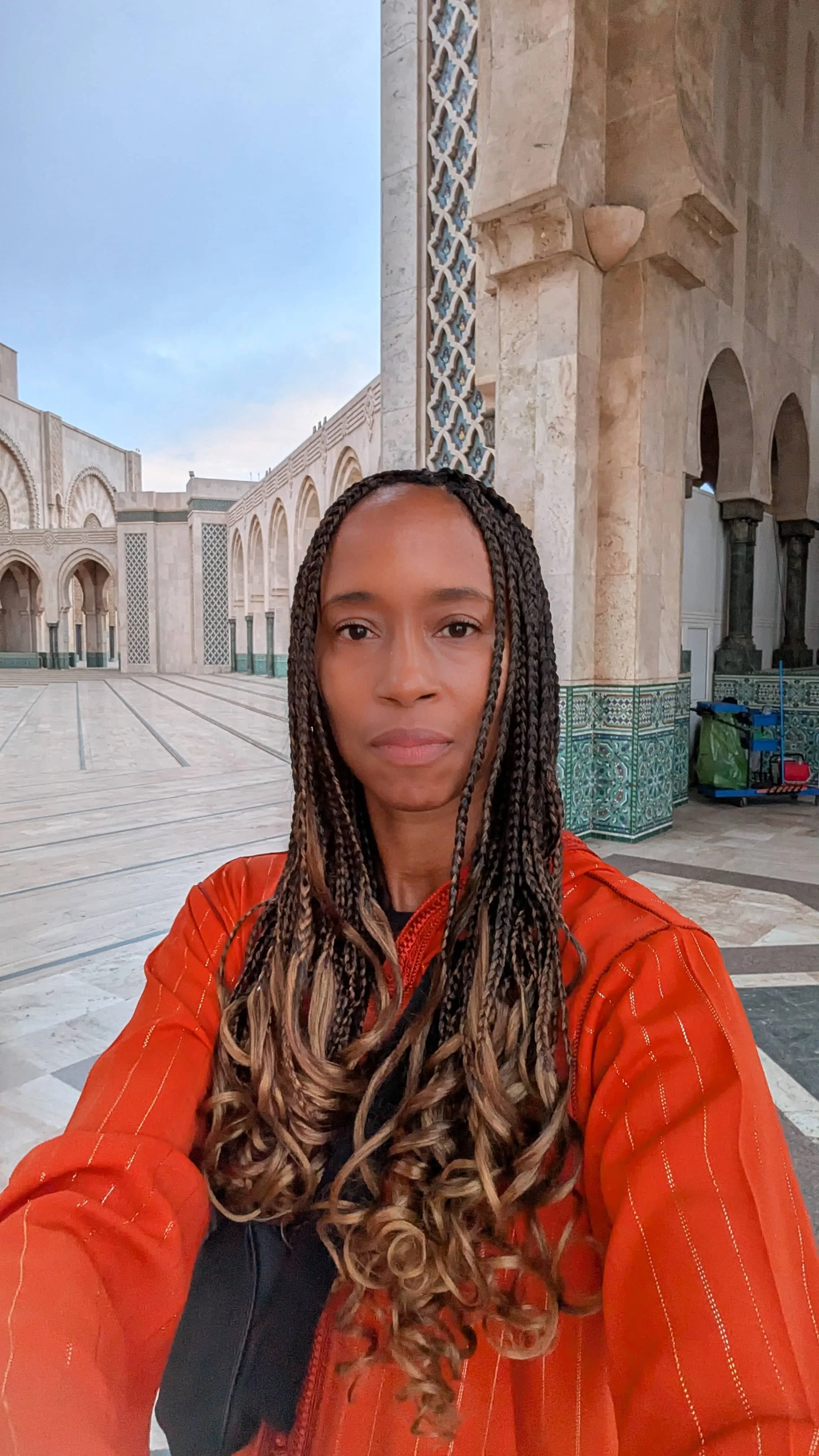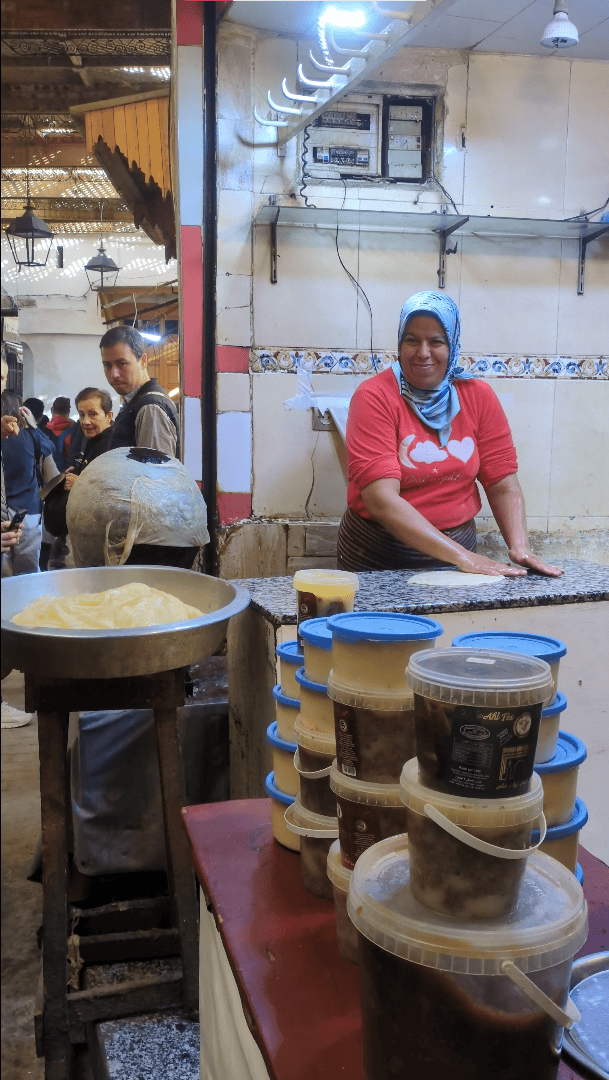Lessons from Christmas in Morocco: How New Experiences Can Transform Leadership Perspectives
When my daughter and I landed in Casablanca, Morocco, I had a picture in my mind—an image shaped by classic movies and old stories. I thought of Humphrey Bogart, romantic intrigue, and a world frozen in time. But stepping into the bustling, modern city was a revelation. Casablanca was alive with energy, a vibrant mix of the contemporary and the traditional. It shattered my expectations in the best way possible, setting the tone for a journey that would take me far outside my comfort zone.
Traveling to Morocco wasn’t just about exploring a new country; it was about exploring new perspectives. From joining a group of strangers on a pre-planned itinerary to navigating unfamiliar customs, the experience challenged me to embrace change, trust the process, and stay open to discovery. In doing so, I uncovered lessons that resonate far beyond travel—lessons that have transformed how I approach leadership and life.
This journey offered powerful insights into diversity and collaboration, the value of long-term vision, the beauty of simplicity, and the necessity of adaptability. These principles, drawn from Morocco’s culture and landscapes, remind us that stepping outside our routines and embracing the unfamiliar can be a profound catalyst for growth. For leaders, these lessons offer a map for navigating change, fostering innovation, and connecting with the people and teams we serve.
Diversity and Collaboration: Lessons from Casablanca
Walking through Casablanca, I was struck by its unique blend of modernity and tradition. Skyscrapers stood alongside historic mosques, and bustling markets intertwined with sleek urban spaces. It wasn’t just a city—it was a living, breathing example of cultural harmony. This rich diversity of influences brought vibrancy and depth to every interaction and experience, a reminder of how diversity enriches not just cities, but also teams and organizations.
The city’s melting pot of people and ideas echoed an essential truth about leadership: diverse teams drive innovation and creativity. Just as Casablanca thrives on its blend of cultures, our teams thrive when we invite diverse perspectives to the table. The value lies not only in differences but in how those differences come together to create something stronger, more dynamic, and full of possibility.
One of the most challenging yet rewarding parts of my journey was traveling with a group of strangers on a pre-planned itinerary. It required surrendering control and trusting a process that wasn’t mine to design. As a leader, I’m used to charting the course, but this experience reminded me of the power of collaboration—of allowing others to lead, contribute, and guide.
Leaders don’t have to have all the answers; sometimes, our role is to create space for others to shine. Casablanca’s vibrant tapestry and the experience of stepping into an unfamiliar group reinforced this: trust, diversity, and collaboration are the cornerstones of progress and transformation.
The Power of Long-Term Vision: Reflections from Fez
Stepping into Fez felt like stepping back in time. The city’s winding streets, traditional crafts, and centuries-old architecture spoke of a place deeply rooted in its history. For hundreds of years, Fez has maintained its cultural identity, preserving traditions while adapting to the world around it. This steadfast commitment to its values serves as a powerful lesson for leaders: the importance of taking a long-term approach to goals and principles.
In leadership, it’s easy to get caught up in the urgency of immediate tasks and short-term wins. Yet, Fez teaches us the value of patience and steadfastness. True success isn’t just about quick results—it’s about cultivating a vision that endures. Leaders who remain grounded in their core values create a sense of stability and trust, even in uncertain times.
This doesn’t mean ignoring the present. Rather, it’s about balancing today’s demands with a commitment to what will matter in the long run. Think about the legacy you’re building—are your decisions today aligning with the values you want to uphold years from now?
Fez’s cultural preservation shows that steadfast leadership doesn’t stifle growth; it enhances it. By anchoring ourselves in enduring principles, we can guide our teams through change without losing sight of what truly matters. Leaders who embrace this long-term vision not only navigate challenges but also leave a meaningful, lasting impact.
Simplicity and Presence: Insights from Imlil
Nestled in the Atlas Mountains, the village of Imlil exudes a quiet simplicity. Life there revolves around sustainable practices, close-knit communities, and a deep respect for nature. Compared to the complexity of modern life—where we’re surrounded by endless notifications, packed schedules, and overcomplicated routines—the lifestyle in Imlil felt like a breath of fresh air.
As leaders, we often equate complexity with progress. We layer on more processes, chase endless goals, and fill our days with back-to-back commitments. But what if simplicity was the key to greater clarity and effectiveness? In Imlil, I was reminded of the beauty of slowing down, stripping away unnecessary distractions, and focusing on what truly matters.
In leadership, simplifying can mean decluttering agendas, streamlining decision-making, or prioritizing only the most meaningful goals. For instance, instead of running through an exhaustive to-do list, take a moment to ask: What will have the most significant impact today? By focusing on fewer, more intentional actions, leaders can foster presence and purpose, making them more effective in guiding their teams.
Simplicity isn’t about doing less—it’s about doing what matters. When we declutter our lives and lead with presence, we create space for deeper connections, sharper insights, and greater fulfillment. Take a page from Imlil’s way of life and consider: What can you simplify to show up more fully as a leader?
Adaptability and Resilience: Lessons from the Sahara Desert
Standing under a vast expanse of stars in the Sahara Desert, I was struck by its sheer magnitude—an ecosystem as large as the United States, with relentless conditions and scarce resources. Yet, 2.5 million people and countless species not only survive but thrive here. Their secret? Adaptability. Through ingenuity, instinct, and resourcefulness, they’ve mastered living in one of the harshest environments on Earth.
For leaders, the Sahara is a powerful metaphor for navigating change. Like its inhabitants, leaders often face shifting landscapes—economic uncertainty, industry disruption, or organizational transformation. Survival in these moments demands adaptability: the ability to adjust quickly, trust instincts, and innovate with what’s available.
In leadership, adaptability means welcoming change as an opportunity rather than a threat. It’s about asking, “What’s possible with the resources at hand?” and having the courage to act on that vision. For example, teams that pivot to meet unexpected challenges often emerge stronger and more unified. Leaders who model resilience inspire their teams to see adversity as a springboard for growth.
To cultivate adaptability, start by focusing on flexibility. Embrace innovation by challenging existing norms and exploring fresh perspectives. Lean into your instincts when clear solutions are absent, and leverage the strengths of your team to craft creative responses to challenges.
The lesson of the Sahara is clear: with the right mindset and tools, even the harshest conditions can be navigated. Imagine what’s possible when you lead with resilience and the belief that you and your team can thrive in any environment.
The Transformative Power of New Experiences
Traveling to Morocco was more than just a journey; it was an invitation to step beyond my comfort zone and immerse myself in a completely different world. From navigating an unfamiliar itinerary to meeting people with diverse perspectives, each moment challenged me to grow. These experiences broadened my understanding of collaboration, resilience, and the power of embracing the unknown. They reminded me that the richest lessons often come from unexpected places—when we allow ourselves to see the world through a new lens.
As leaders, the willingness to seek and embrace new experiences is invaluable. It pushes us to question assumptions, explore innovative ideas, and connect with others in meaningful ways. Whether it’s traveling to a new place, engaging with a different community, or stepping into an unfamiliar role, these moments of growth shape how we lead and inspire those around us.
Leadership thrives on openness and adaptability. By intentionally pursuing diverse experiences, we not only deepen our understanding of the world but also cultivate the skills and insights necessary to navigate an ever-changing landscape. These lessons are not just personal—they ripple outward, transforming the teams and organizations we guide.
My journey through Morocco was filled with lessons that extended far beyond its landscapes. From Casablanca’s vibrant diversity to Fez’s commitment to long-term vision, Imlil’s celebration of simplicity, and the Sahara Desert’s unwavering adaptability, each experience offered profound insights into leadership. These principles—diversity, steadfastness, simplicity, and resilience—aren’t just tied to travel; they are essential traits for leading in a complex and ever-changing world.
As we step into a new year, I encourage you to reflect on your own leadership journey. How can you embrace diversity in your teams? What enduring principles guide your vision? Where can you simplify to foster clarity? And how might adaptability unlock new opportunities for growth?
Take a bold step outside your comfort zone—whether it’s trying something new, engaging with a different community, or exploring an unfamiliar perspective. The lessons you uncover may not only transform your leadership but inspire those you serve to do the same.
If you're ready to inspire courageous leadership in your organization, discover more about my keynote Courage as a Carry-On. Let’s explore how these principles can transform your team. Click here to book me for your next event.





